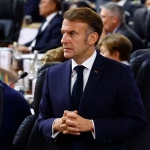The European Central Bank (ECB) Vice President, Luis de Guindos, recently stated that while there has been significant progress in bringing down inflation, the central bank cannot declare victory just yet. Despite this progress, the price outlook is still surrounded by substantial risks. However, de Guindos expects inflation to decline to target levels next year. While domestic inflation remains high, it is moderating. Additionally, the risks to the growth outlook are elevated and tilted to the downside.
In terms of market reaction, at the time of writing, the EUR/USD was up 0.04% on the day at 1.0816. This indicates that investors are reacting cautiously to the ECB’s comments regarding inflation and the economic outlook.
The European Central Bank in Frankfurt, Germany, serves as the reserve bank for the Eurozone. The ECB’s primary mandate is to maintain price stability by keeping inflation at around 2%. It achieves this goal by adjusting interest rates. High interest rates typically result in a stronger Euro, while lower rates can weaken the currency. The ECB Governing Council, which includes heads of Eurozone national banks and six permanent members, makes monetary policy decisions at meetings held eight times a year, led by President Christine Lagarde.
In extreme situations, the ECB can implement Quantitative Easing (QE), a policy tool in which the bank prints Euros to purchase assets like government or corporate bonds from financial institutions. QE is used when lowering interest rates alone may not achieve price stability. The ECB utilized QE during the Great Financial Crisis, in 2015, and during the covid pandemic. QE usually results in a weaker Euro.
Quantitative Tightening (QT) is the opposite of QE and is implemented after an economic recovery begins and inflation rises. During QT, the ECB stops purchasing bonds and reinvesting maturing principal. This policy is typically positive for the Euro. By understanding these key policies and tools, investors can better interpret the ECB’s actions and their impact on the Eurozone economy.
In conclusion, the European Central Bank’s Vice President’s comments regarding inflation and economic risks underscore the challenges facing the Eurozone. While progress has been made in bringing down inflation, the ECB cannot declare victory yet. As the central bank continues to navigate economic uncertainties, investors will closely monitor market reactions and ECB policy decisions. By understanding the ECB’s role, policies, and tools, stakeholders can make informed decisions and respond effectively to changes in the Eurozone economy.










